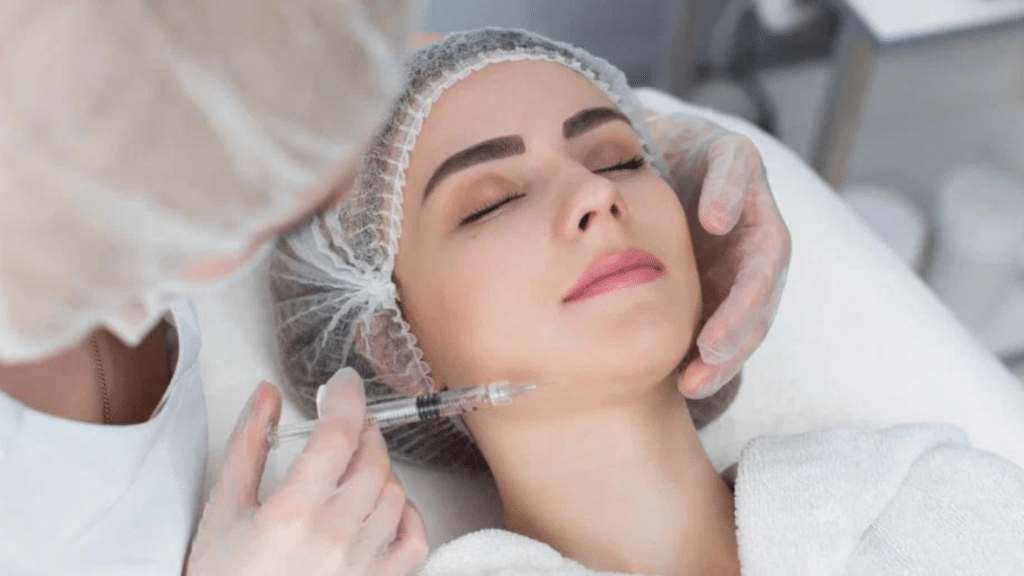Did you know the beauty industry holds countless secrets? Cosmetology goes far beyond just haircuts and makeup.
From the chemistry behind hair color to the specific techniques that shape facial features, cosmetology professionals study for years to master their craft.
This blog will share eye-opening facts about the world of beauty.
You will learn about ancient beauty practices, modern techniques, and how the industry has changed through time.
Facts About the World of Cosmetology
These facts reveal the rich history and surprising depth of the cosmetology profession.
1. Cosmetology is Both an Art and a Science
Beauty professionals blend creativity with chemical knowledge daily.
Think about it: Mixing hair color requires understanding chemical reactions with different hair types. Skincare specialists must know how ingredients affect various skin conditions.
- Hair colorists must master color theory and chemical formulations
- Skincare experts learn the skin’s anatomy and product ingredient interactions
- Nail technicians understand the chemistry of adhesives and hardeners
2. The Word Cosmetology Comes from Greek
The term has meaningful linguistic roots that reflect its purpose. Kosmētikos (beautifying) combined with “-logia” (study of) perfectly shows the field’s essence.
- The word “cosmetic” shares the same Greek origin
- Ancient Greeks used olive oil, honey, and clay for beauty treatments
- Their beauty practices influenced cultures throughout the Mediterranean
Ancient Greeks placed a high value on physical beauty. They developed many cosmetic practices that would later influence modern beauty standards.
3. Cosmetology Dates Back Over 6,000 Years
Egyptian nobles weren’t just fashion-forward; they were beauty pioneers.
They lined their eyes with kohl for beauty and sun protection. Hair, nails, and skin got color from henna applications.
- Cleopatra bathed in donkey milk to soften her skin
- Red ochre was used as lip and cheek color
- Egyptians created some of the first perfumes from flowers and resins
These early specialists created formulations from natural ingredients. Their knowledge was passed down through generations.
4. Cosmetologists are Licensed Professionals
Getting licensed requires serious dedication and study. Most states demand between 1,000-2,000 training hours. Programs cover safety protocols, practical skills, and theory.
Students face both written and hands-on examinations. The entire process typically takes 9-15 months of full-time study.
- Licensing tests cover sanitation, safety, and technical skills
- Professionals must understand state regulations and health codes
- Many states require regular license renewal and continuing education
5. The Field Covers More than Just Hair
Many people have a limited view of what cosmetology includes.
Complete programs teach skincare science, facial techniques, nail structure, makeup application, and sometimes even massage.
- Esthetics focuses on skin health and facial treatments
- Nail technology covers natural nail care and artificial enhancements
- Makeup artistry includes color theory and application techniques
6. Cosmetologists can Work in Diverse Settings
Job opportunities extend far beyond traditional salons. Cruise ships hire beauty staff for onboard spas, and film sets need makeup artists for camera-ready looks.
Fashion shows require hair teams to create runway styles. Hotels, resorts, and department stores all employ beauty experts.
- Retirement communities often have on-site salons.
- Morgues and funeral homes employ cosmetologists for final preparations.
- Military bases provide beauty services for personnel and families.
7. The Industry is Constantly Evolving
What worked yesterday might not match today’s techniques. New tools, from improved heat styling technology to advanced skincare devices, emerge regularly.
- Social media platforms create new beauty trends almost weekly
- Artificial intelligence now helps with color matching and skin analysis
- Virtual reality training is entering beauty education
8. Cosmetology Can be a Lucrative Career
Financial success depends on several key factors. Location, specialization, clientele, and business sense all affect earning potential.
- Commission-based stylists can earn 40-60% of service prices
- Booth renters keep all service income but pay fixed space costs
- Celebrity stylists can command hundreds per service
Many supplement their income through teaching, writing, or creating social media content. Salon owners and product developers can see even higher returns on their expertise.
9. Continuing Education is Common
Learning never stops for serious beauty professionals. Most attend multiple training sessions yearly to refresh skills and learn new techniques.
Trade shows feature demonstrations from industry leaders. Many brands offer certification in specific products or methods.
- Beauty conventions draw thousands of professionals for education
- Platform artists demonstrate techniques on stage to large audiences
- Online subscription services provide ongoing training videos
10. Cosmetologists Can Spot Health Issues
The close-up nature of beauty work creates unexpected health benefits.
Stylists might spot unusual moles during haircuts. Nail technicians recognize fungal infections early.
- Stylists can notice scalp conditions like psoriasis that clients can’t see
- Massage therapists sometimes find suspicious lumps
- Estheticians can identify skin cancers during facial treatments
11. The Field is Global
Beauty services transcend cultural and geographic boundaries. A skilled cosmetologist can find work almost anywhere in the world.
- Hair braiding techniques vary widely across African countries
- Japanese salons specialize in straight perms and hair smoothing
- Middle Eastern beauty traditions focus on henna art and threading
Techniques vary between countries, but fundamental skills remain valuable everywhere. International salons, spas, and cruise lines actively seek talented professionals.
12. Some Cosmetologists become Entrepreneurs
The path from beauty school to business owner happens frequently. Many start by renting chairs in existing salons before opening their own spaces.
- Product lines like Paul Mitchell and Bumble and Bumble began with stylists
- Former practitioners often found beauty schools
- Some create specialized tools based on their daily work needs
13. The Beauty Industry is Focusing on Sustainability
Environmental awareness has transformed how beauty businesses operate. Many brands now offer refillable packaging, natural ingredients, and cruelty-free formulations.
- Hair clippings can be used to create mats that absorb oil spills
- Water-reducing showerheads can save thousands of gallons annually
- Energy-efficient lighting reduces salon carbon footprints
This shift reflects growing consumer demand for responsible beauty practices.
14. Makeup Artists in Film and TV Create Illusions
Screen makeup goes far beyond simple beauty enhancement. Artists use specialized products to age actors, create wounds, or design fantasy creatures.
- Prosthetic applications can take 4+ hours for complex characters
- HD makeup must be invisible on camera but effective under bright lights
- Period films require historically accurate makeup and hair designs
They must understand how makeup performs under different lighting and camera technologies. Their work needs to withstand long shooting days while looking consistent between scenes.
15. Cosmetology Training is Hands-On
Learning beauty skills requires practice, not just theory. Students start with mannequins before moving to real models.
- A typical student might perform 50-100 haircuts before graduation
- Color mixing is practiced repeatedly until students develop intuition
- Customer service scenarios are often role-played to build communication skills
They perform services under instructor supervision, gaining confidence through repetition. The best programs simulate real salon environments, including client consultation and timing.
16. The Field has a Rich History of Unusual Beauty Practices
Throughout history, people went to extraordinary lengths for beauty. Renaissance women used belladonna to dilate pupils despite its toxicity. Victorian ladies applied arsenic to lighten their complexions.
- Lead-based face powders were popular despite causing skin damage
- Leeches were once used to create pale complexions
- Bird droppings were used in Japanese geisha beauty routines
17. Cosmetologists Help Boost Clients’ Confidence
The psychological impact often exceeds the physical changes. Someone feeling down might leave a salon standing taller with renewed self-assurance.
- Cancer patients find comfort in beauty services during treatment
- Special occasion styling helps people feel their best during important events
- Corrective makeup can help people with scarring or skin conditions
Makeovers can help mark major life transitions or prepare for important events. Many clients report that regular appointments improve their mood and outlook.
18. There are Specialized Roles, Like Cosmecaregivers
Accessibility in beauty services has created unique specializations. Cosmeticians provide services to those who cannot visit salons, such as elderly individuals, hospital patients, or people with mobility issues.
- Some specialists work with burn survivors on camouflage makeup
- Others help patients prepare for major life events like weddings
These professionals adapt standard techniques for special circumstances. They often provide emotional support alongside beauty services.
19. Cosmetology is About People
At its heart, this profession centers on human connection. Technical skills matter, but understanding what clients truly want requires empathy.
- Many clients see their stylists more regularly than friends or family
- The stylist’s chair often becomes a place of confession and support
- Celebrations and life changes are often shared first with beauty professionals
Conclusion
Beauty goes far beyond surface appearance, and cosmetology combines art, science, and human connection in remarkable ways.
The next time you visit a salon, remember the professional working with you has trained extensively, stays current with changing techniques, and might even spot health concerns.
Want to learn more?
Consider researching local cosmetology schools for demonstrations or following beauty professionals on social media.




















